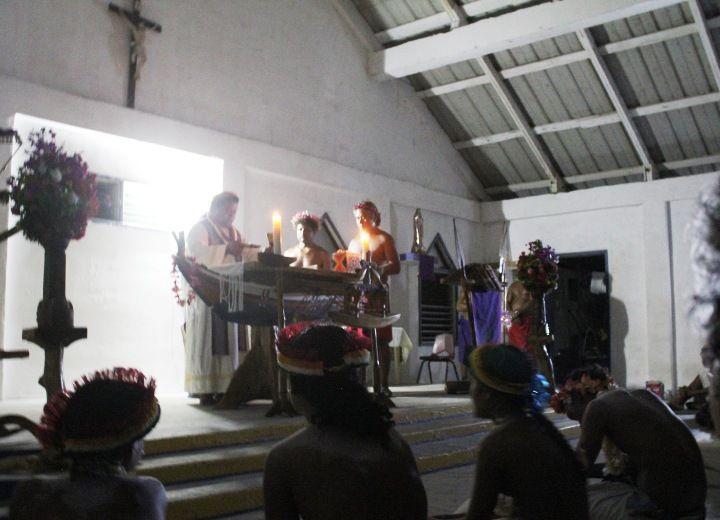
Figure 1.--The Micronesians are mostly Christian, about evenly divided between Catholics and Protestants. Here we see a First Communion Mass on the atoll of Lamotrek (central Caroline Islands) about 2010. |

|
Religion is important in Micronesian culture. No one studied traditional Micronesian religions in detail. The Christian tradition was firmly established befire anyone thought of doing this. Avialable reports describe the Micronesians as polytheists with a belief in multiple gods. Here the specific pantheon varied from country to country. In adduition to gods, the Mictronesians believed in many spirits inhabiting specific localities or performing recognized functions. The religious complex also included ancestors and deceased neighbours who could sometimes make contact with living descendants and friends. The religious practices involved with all three categories (gods, spirits, and ancestors) were never codified and varies from island to island, even communities ion the same island. There were religious specialists like meducine men to deal with all these supernatural beings. And to further complicate the situation, these beings could transform themselves from one type to the other. Thre cosmology concived of three or even more vertically arranged levels of the universe: 1) heaven described as sky world, 2) the earth, and 3) the underworld. Some believed in multiple sky worlds, a widely accepted ciomcept in Polynesia. Most Micronesians today are Christians, about evenly divided between Catholica and Protestants. A very small number of Islanders do not identify with a Christian church, either because they are not religious or adhere to another faith. Christianity was inplanted by European missionaries (19th century). The Spanish helped to implant Catholicism. Christianity was furher strengthened by the Germans when they purchased the islands from Spain (1898). The Germans helped to bring Protestantism to the Islands. Christianity was widely practice by the early-20th century. Traditiional practices cgradually dusappeard, although thy ciontinued to be parcticed for a while on Yap and other atols on the central Carolines. The Japanese were awarded a League of Nations Trusteeship after World War I, but appear to have had little impact on religion. Japan primarily focused on the economy. They tried to promote Japanese culture and institutions within the Empire, but Shintoism was a highly nationalistic religion and one aspect of Japanese culture not promoted. Despite its Western connections, the Japanese allowed the Islanders to continue practicing their religion, although the role of Christian missionaries was curtailed.
The American influence after the Pacific War resulted in a Bill of Rights that rejected the idea of a state religion. The Constitution of Micronesia provides absolute freedom of the Islanders to practice any religion they may choose. Christian missionaries continue to work in Micronesia.
Navigate the Boys' Historical Clothing Web Site:
[Return to the Main Micronesia page]
[Return to the Main Oceania page]
[Return to the Main countries page]
[Introduction]
[Activities]
[Biographies]
[Chronology]
[Cloth and textiles]
[Clothing styles]
[Countries]
[Topics]
[Bibliographies]
[Contributions]
[FAQs]
[Glossaries]
[Images]
[Links]
[Registration]
[Tools]
[Boys' Clothing Home]
